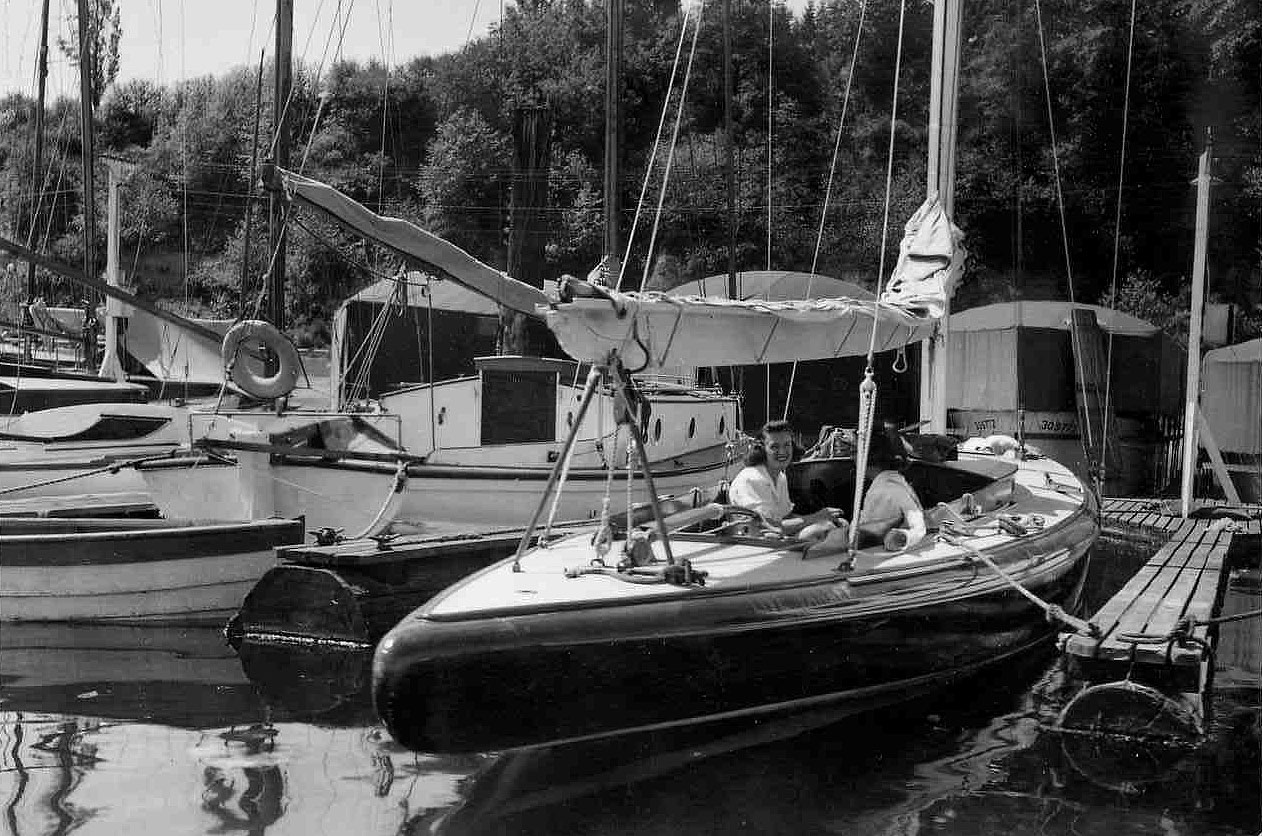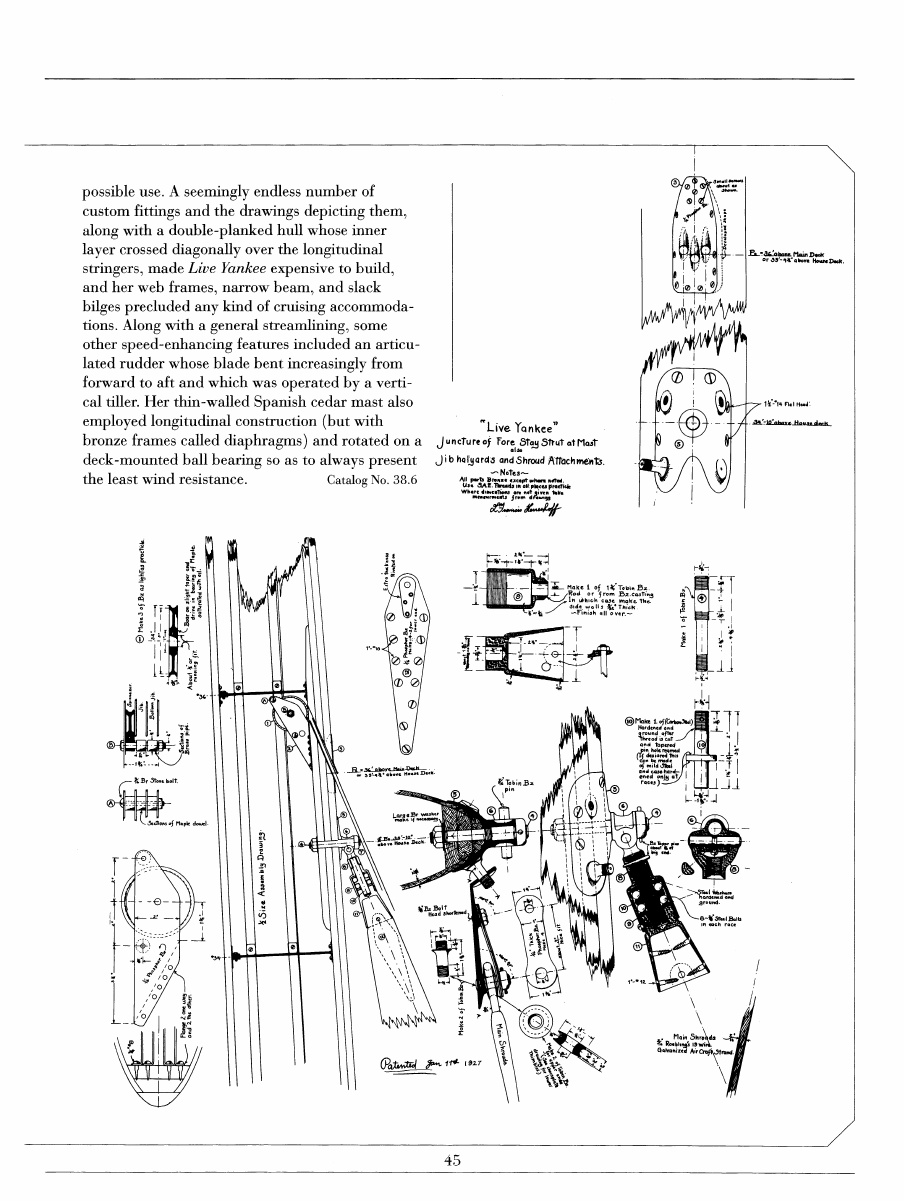LIVE YANKEE R6
Specifications
| Name: | LIVE YANKEE |
| Sail Number: | R6 |
| Previous Sail Number(s): | R16 |
| Designer: | L. Francis Herreshoff |
| Year Designed: | 1927 |
| Builder: | Britt Bros |
| Year Built: | 1927 |
| Class: | R-Class |
| Current Condition: | Destroyed/Sunk |
| Description of Condition: | She went from Chicago to Cleveland where she was broken up after racing for several years. |
Measurements
| LOA: | 39'6" |
| Beam: | 6'6" |
Description
LIVE YANKEE, AN R-CLASS SLOOP OF 1927 39'6" x 6'6"
Here is the ultimate racing machine of her day, one with so much hard-to-build sophistication that both Live Yankee and her designer met with considerable derision in spite of an impressive racing record. As with her predecessor Yankee, LFH employed longitudinal construction and with it achieved a hull so light as to amount to only 20% of the total displacement—the 10,400-pound lead ballast keel was intended to make up the remaining 80%, although on launching it proved a bit too heavy, and had to undergo some surgery in order for Live Yankee's waterline length to fall within the R-class limits. Britt Bros. were selected as builders, and photos show they made a fine job of it. A streamlined spar forestay, rigged to rotate, shows in both drawings and photos. A double-luff main-sail and a jib luff sleeve extended the teardrop shapes of the mast and the spar forestay well aft for an overall aerodynamic cross-sectional shape. The streamlined mainsail headboard, of bronze-reinforced maple, became virtually a part of the masthead when the sail was raised. Live Yankee's rig, however, was new and untried (although patented: U.S. Patent #1,613,890 of January 1927). As a backup, an alternate and somewhat more conventional rig (although one still calling for a spar forestay, but for a single-thickness jib luff) was built and waiting in the wings for possible use. A seemingly endless number of custom fittings and the drawings depicting them, along with a double-planked hull whose timer layer crossed diagonally over the longitudinal stringers, made Live Yankee expensive to build, and her web frames, narrow beam, and slack bilges precluded any kind of cruising accommodations. Along with a general streamlining, some other speed-enhancing features included an articulated rudder whose blade bent increasingly from forward to aft and which was operated by a vertical tiller. Her thin-walled Spanish cedar mast also employed longitudinal construction (but with 'Live Yankee. bronze frames called diaphragms) and rotated on a deck-mounted ball bearing so as to always present the least wind resistance.



